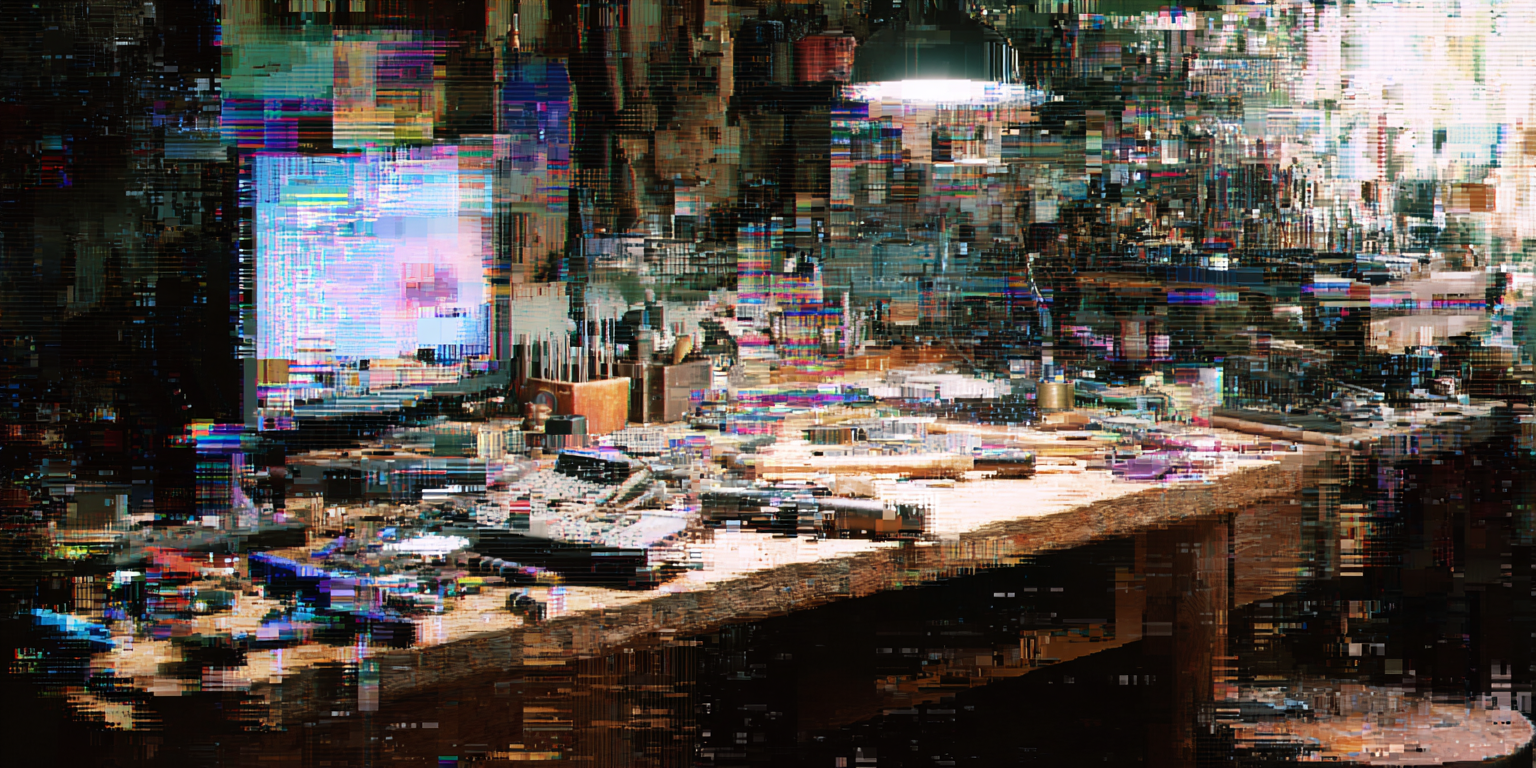I’ve spent most of my career in the business of "making digital things". At my gaming company Sticky Studios, that meant building games around theatrical IP and interactive worlds; each a new production, handcrafted and fought for.. Later, at Talespin and now Cornerstone, it meant building software: platforms, systems, and IP designed to scale. I’ve lived on both sides of that spectrum; the craft of creative production and the repeatability of productization, each with its own beauty, tension, and fragility.
But AI has upended that logic. The strange thing about the AI boom is that it’s erasing the very premise that defined the last one: that making something has intrinsic value. For two decades, founders and product builders were rewarded for creating: software, content, systems. Each artifact had an implied scarcity; each piece of code or media could stand as an asset. But that logic is breaking down.

And this trend was already underway long before AI accelerated it.
In gaming, data from early 2025 shows that out of nearly 13 000 new titles released on Steam, more than 8 000 (≈66 %) earned less than US $1 000 in revenue. Many didn’t even recoup the US $100 listing fee required to publish on the platform. Music streaming tells a similar story. Luminate’s 2024 year-end report counted over 200 million tracks on streaming services, of which 93 million were played ten times or fewer, and 175 million (87 %) reached 1 000 plays or less. Video (YT and streaming services) is no different. A detailed analysis found that YouTube now hosts over 10 billion videos, yet 68 % have zero views and 93 % never reach 1 000 views. The median video attracts around 35 views. The video streaming market deserves an entire different post, but the cost of fragmentation and rising competition among providers demonstrate similar patterns.
Even SaaS and AI are showing the same pattern of abundance. Bessemer Venture Partners’ State of AI 2025 report describes “competitive intensity at an all-time high,” with promising categories attracting two to three times more entrants than in previous years, and established SaaS vendors bolting on AI features faster than customers can absorb them.
The numbers across these industries make one thing clear: oversupply was already eroding the value of “making things.” AI didn’t create that problem, it simply made it impossible to ignore. It has made creation trivial and duplication effortless. The world doesn’t necessarily need more software, and it doesn’t need more "content". The question is no longer how to make things, but what remains valuable once everything can be made.
The paradox of abundance
Abundance changes the nature of value. When production becomes frictionless, the bottleneck moves upstream. To taste, timing, and judgment. AI didn’t just make it cheaper to build; it made it easier to build things that don’t matter. The constraint used to be technical. Who could code, who could scale? Now the constraint is psychological: who can resist creating one more thing that shouldn’t exist? Most builders haven’t adjusted to that. They’re still just in creation mode, launching products into a world that no longer rewards supply.
The old moats, proprietary data, code, content, are dissolving. Every advantage that could be encoded can now be replicated. What’s left is identity. Not brand in the marketing sense, but point of view. A product is becoming less about what it does and more about what it represents. That shift sounds superficial, but it isn’t. When every feature can be copied, coherence and intent become the differentiator. A strong product today is one that could only have been built by that team, in that moment, for that reason. Software, like art, is starting to depend on authorship.
Designing for meaning
Most entrepreneurs still think their job is to make something new. But in an environment of excess, the harder and rarer skill is to guide. Users no longer lack tools; they lack orientation. The winning products are the ones that reduce noise, create hierarchy, and restore confidence in what matters. Curation, context, and compression, these are the new creative acts. Building isn’t the problem anymore. Selection is.
Abundance makes the world feel closed, but constraint reopens it. When you limit the canvas, you rediscover edges. The most interesting builders I know have stopped trying to be platforms. They build small, narrow systems that solve a single problem elegantly, often in spaces too specific for incumbents to notice. Constraint is not a trade-off; it’s a strategy. It turns clarity into a moat.
But focus comes with its own challenge. A small, elegant solution can be hard to fund and harder to explain. Investors often look for scale before conviction, and customers don’t always know what they’re missing until someone shows them. Yet that’s precisely where the new leverage lies: in making less, with intent. The next wave won’t be funded by size, but by clarity: ideas that earn conviction before they seek capital.
As creation gets automated, meaning becomes scarce. Products that endure will not be the most intelligent or efficient ones, but the ones that stand for something. Meaning doesn’t scale easily, which is why it’s durable. You can copy a feature; you can’t copy intent. AI is forcing a return to fundamentals - to why we build, not just what we can build. For founders and product leaders alike, that’s both a loss and a liberation: the loss of easy value, and the chance to rediscover purpose in a world that’s forgotten how to care.
AI may be changing the economics of creation, but not the impulse behind it. We still build to understand, to express, to connect. The difference now is that those reasons are finally visible again.